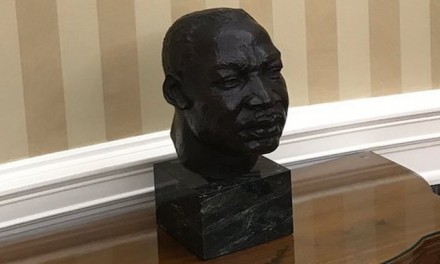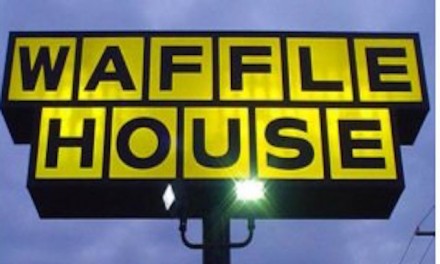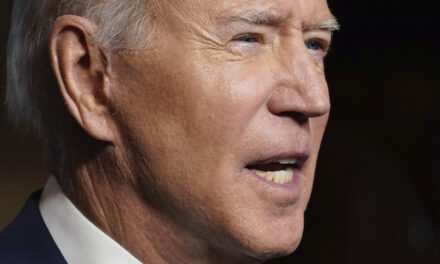Not one student in five Baltimore high schools and one middle school tested proficient in state testing in the subjects of math and English – a finding that was discovered during a Project Baltimore investigation.
The overwhelmingly dismal academic performance of students is alarming.
“Their scores place them in one of five categories – a four or five is considered proficient and one through three are not,” Townhall reported. “At Frederick Douglass [High School], 185 students took the state math test last year and 89 percent fell into the lowest level. Just one student approached expectations and scored a three.”
A lineup for failure
The six schools unable to produce one student who is proficient in math or English are: Frederick Douglass High School, Achievement Academy at Harbor City, New Era Academy, Excel Academy at Francis M. Wood High, New Hope Academy and Booker T. Washington Middle School.
Parents are up-in-arms, claiming that the schools are setting their children up for failure.
“Some parents are rightfully outraged, noting that this isn’t necessarily a student issue, but one that lands squarely on the teachers,” Townhall’s Matt Vespa informed.
And failing academics appear to be the least of Baltimore’s problems, as it is well on its way to beating out New Orleans, Detroit, St. Louis, Chicago, Washington, D.C. and New York City at the nation’s murder capital this year.
“There are many problems plaguing Baltimore, [where] the homicide rate is out of control, averaging one murder per day,” Vespa noted. “In April, the city surpassed 100 homicides and it’s on track to having the highest homicide rate in the country.”
Rare success story
Despite the poor conditions for advancement in Baltimore, Navon Warren, a student from one of the six low-performing schools, has found a road to success. He was born and raised in West Baltimore, where his father was fatally shot when he was just three months old. By the time he turned 18, one of his classmates and two of his uncles were also fatally shot on the streets of Baltimore.
“I’ve lost a lot of people, so I’m used to it. It hurts,” Warren told Fox Baltimore. “I just chose not to show it. I just keep it in. You just have to live on and keep going on every day. You have to do it somehow.”
He has not let his environment dictate his future or deter him from achieving his goals.
“Despite his tremendous loss, Warren is set to graduate this year from Frederick Douglass High School,” Fox Baltimore’s Chris Papst announced. “It’s a school where only half the students graduate and just a few dozen will go to college. Last year, not one student scored proficient in any state testing.”
His mother, Janel Nelson, believes that students’ failure in the classroom – that was reflected to the abysmal state testing results – should primarily be attributed to the teachers, who are not equipping students to succeed.
“That’s absurd to me,” Nelson expressed. “That’s your teachers report card, ultimately.”
However, she is elated that her son will not suffer the same fate as so many of his fellow students and neighborhood friends.
“It’s exciting for him to get out of the city and exciting for him to start a new chapter in his life,” Nelson shared.
Despite the fact that Baltimore city schools are the fourth highest in the nation with $16,000 in annual expenditures per student, its academic performance is near the bottom.
Death city
Even though it was not until fairly recent that riots spurred by the Freddie Gray police killing have brought attention to Baltimore’s unrest and violent climate, the Eastern Seaboard city has been a hotbed of homicide for decades.
“Baltimore has long struggled with violence and a strained relationship between its police force and many African-American residents,” the Washington Post reported, as published on Philly.com. “It went a decade with 300 or more killings each year in the 1990s before the numbers finally began falling in 2000.”
This downward trend did not last long, however, as the city made national headlines bringing attention to the racial tensions there.
“But the homicide rate hit a high in 2015 – the same year Freddie Gray died in police custody and the city erupted in civil unrest,” the Post’s Peter Hermann and Theresa Vargas recounted. “That year, Baltimore had 344 homicides – the deadliest per capita in the city’s history. The next year marked its second highest, with 318 deaths.”
Compared to other cities, Baltimore is taking over the title as America’s most murderous city.
“This year, it is on track to beat both records and surpass all other big U.S. cities,” Hermann and Vargas divulged. “The 124 murders in Baltimore, with a population of 614,000, brings the homicide rate to 20.2 per 100,000 residents. Comparatively, Washington, D.C., with 681,000 people, has had 41 murders so far this year, for a rate of 6.”
New Orleans, with a population of 389,000, is behind Baltimore with 70 homicides so far, registering a murder rate of 18. St. Louis (population 315,000) trails the Big Easy with 56 homicides and a 17.8 rate, followed by Detroit (677,000 population) with 96 homicides and a murder rate of 14.2. Chicago (2.7 million residents) is next with 189 homicides and a rate of 7. New York City (8.5 million people) tallied up 89 murders with a murder rate of 1.
But part of Baltimore’s problems seems to be the declining number of law enforcement officers on the streets.
“Meanwhile, Baltimore’s police force has shrunk in the past several years, from 2,900 officers to 2,700,” the Post informed. “Washington has 3,800.”
Another part of the problem is the hands-off approach officers have been forced to implement in the city when dealing with criminals.
Brandon Wylie, owner of Wylie Funeral Home, touched on the problem further, saying that the streets are no longer safe in Baltimore.
“People are living in fear,” Wylie told the Post.
The riots in Baltimore are still effecting the city.
“After Freddie Gray’s death, theories circulated about how it contributed to the surge in killings that year,” Herman and Vargas pointed out. “Some people believed that the use and selling of drugs from looted pharmacies contributed to the violence or that old turf battles had been rekindled amid the chaos. But now two years later, if there is a Freddie Gray-effect, residents say it may lie in a heightened distrust of police that leads people to avoid reporting crimes and to seek their own justice.”
With the transition that the local police department is currently under, Baltimore’s crime rate is unlikely to change for the better any time soon.
“The business owner who saw Solomon after he was shot also believes police have changed how they behave for fear of getting in trouble,” the Post reporters noted. “Six officers were charged in Freddie Gray’s death, though none were convicted. The police department – the subject of a scathing Justice Department report that found it had engaged in years of blatant racial discrimination on Baltimore’s streets — is being overhauled under a consent decree with the federal government.”
Wylie says the hands-off protocol followed by police officers has fueled crime and empowered criminals to act as though they are invincible within Baltimore city limits.
“Since the Freddie Gray situation – even if you call the police and give a description – they can’t touch the criminals,” Wylie insisted. “They know they’re untouchable. That’s the key.”
—-
Copyright American Family News. Reprinted with permission.


















Recent Comments